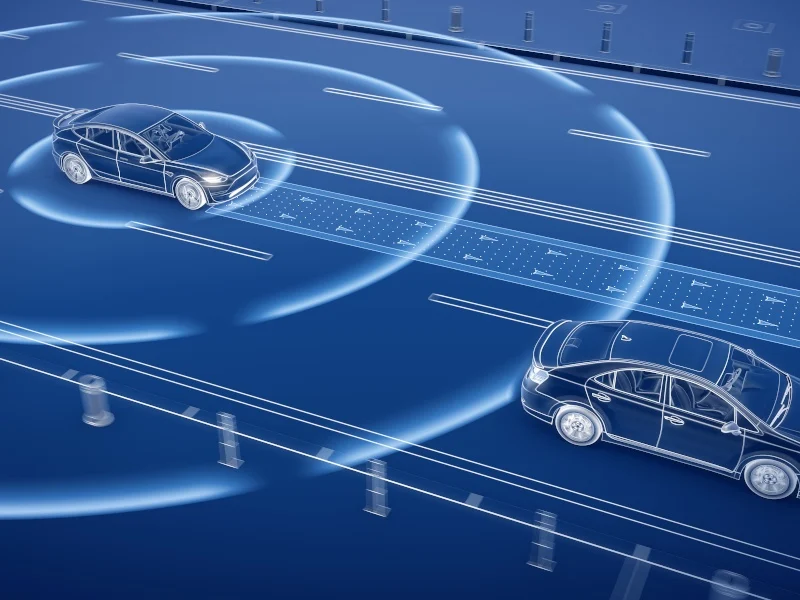Advancements in Autonomous Vehicles: A Peek into the Future of Transportation
The development of autonomous vehicles has been a major focus of the transportation industry in recent years. With the advancements in technology, the concept of self-driving cars has become a reality, promising to revolutionize the way we travel. These vehicles are equipped with advanced sensors and artificial intelligence systems that allow them to navigate and operate without human intervention. As a result, they have the potential to improve road safety, reduce traffic congestion, and provide more efficient and convenient transportation options for people. The future of transportation is being shaped by these cutting-edge advancements, and the impact of autonomous vehicles is expected to be far-reaching.
The future of transportation is being shaped by these cutting-edge advancements, and the impact of autonomous vehicles is expected to be far-reaching. Self-driving cars, driverless cars, and robotic cars are some of the alternative terms used to describe this innovative technology. These vehicles have the potential to enhance mobility for the elderly and disabled, reduce the environmental impact of transportation, and create new opportunities for urban planning and infrastructure development. As the technology continues to evolve, there is a growing interest in the potential social and economic implications of autonomous vehicles, making it a topic of great importance and curiosity for researchers, policymakers, and the general public alike.
1. The Evolution of Autonomous Vehicles
Autonomous vehicles, also known as self-driving cars, have rapidly evolved over the past few decades. What began as a concept in science fiction has now become a reality, thanks to advancements in technology such as artificial intelligence, machine learning, and sensor technology. These vehicles are designed to navigate and operate without human intervention, using a combination of sensors, cameras, and radar to perceive their surroundings and make real-time decisions. The evolution of autonomous vehicles has the potential to revolutionize the way we think about transportation, offering benefits such as improved safety, reduced traffic congestion, and increased mobility for individuals with limited mobility.
As the technology continues to advance, we can expect to see a wide range of autonomous vehicles, including cars, trucks, buses, and even drones. Companies and researchers are working on developing the next generation of autonomous vehicles that are not only capable of driving themselves but also communicating with each other and with the surrounding infrastructure. This interconnected network of autonomous vehicles has the potential to create a more efficient and seamless transportation system, where vehicles can coordinate with each other to optimize traffic flow and minimize delays.
2. The Impact on Road Safety
The development of autonomous vehicles has the potential to significantly improve road safety by reducing the number of accidents caused by human error. According to the World Health Organization, road traffic accidents are one of the leading causes of death globally, with the majority of these accidents being attributed to human error. Autonomous vehicles are equipped with advanced sensing and computing capabilities that allow them to detect and respond to potential hazards much faster than human drivers. They can also communicate with each other to anticipate and avoid potential collisions, creating a safer driving environment for everyone on the road.
Furthermore, autonomous vehicles are designed to adhere to traffic laws and regulations at all times, reducing the likelihood of reckless driving behaviors such as speeding, tailgating, and running red lights. As the technology continues to improve and more autonomous vehicles are integrated into the transportation system, we can expect to see a significant reduction in the number of accidents and fatalities on the road.
3. Environmental Benefits of Autonomous Vehicles
Autonomous vehicles have the potential to bring about significant environmental benefits by optimizing driving patterns and reducing fuel consumption. These vehicles are programmed to make efficient use of road space and resources, which can help reduce traffic congestion and minimize the environmental impact of transportation. By communicating with each other and with traffic infrastructure, autonomous vehicles can coordinate their movements to avoid unnecessary idling and reduce overall fuel consumption.
Additionally, the widespread adoption of electric and hybrid autonomous vehicles can further contribute to environmental sustainability by reducing greenhouse gas emissions and air pollution. As the technology continues to advance, we can expect to see an increase in the production and adoption of eco-friendly autonomous vehicles, leading to a cleaner and more sustainable transportation system.
4. The Future of Urban Mobility
Autonomous vehicles have the potential to transform urban mobility by offering new transportation options and improving the overall efficiency of the transportation system. With the rise of ride-sharing services and on-demand transportation, autonomous vehicles can provide a convenient and cost-effective alternative to traditional car ownership. This can lead to a reduction in the number of privately owned vehicles on the road, freeing up valuable urban space and reducing traffic congestion.
Furthermore, autonomous vehicles can be integrated with public transportation systems to create a seamless and interconnected network of mobility options. This can make it easier for individuals to access public transportation and reduce the reliance on personal vehicles for daily commuting. As the technology continues to advance, we can expect to see a shift towards a more integrated and sustainable urban mobility system, where autonomous vehicles play a key role in providing efficient and accessible transportation for all.
5. Challenges and Considerations
While the potential benefits of autonomous vehicles are significant, there are also a number of challenges and considerations that need to be addressed as the technology continues to advance. One of the key challenges is ensuring the safety and reliability of autonomous vehicles in all driving conditions, including inclement weather, complex urban environments, and unexpected road hazards. Additionally, there are ethical and legal considerations surrounding the use of autonomous vehicles, such as determining liability in the event of accidents and ensuring the privacy and security of the data collected by these vehicles.
Furthermore, the widespread adoption of autonomous vehicles will require significant infrastructure upgrades and regulatory changes to accommodate these new technologies. This includes the development of dedicated lanes, charging stations for electric vehicles, and updated traffic laws to govern the behavior of autonomous vehicles. As the industry continues to address these challenges and considerations, we can expect to see a more comprehensive and robust framework for the integration of autonomous vehicles into the transportation system.
6. Impact on Public Transportation
Autonomous vehicles have the potential to revolutionize public transportation by providing more efficient and accessible options for commuters. These vehicles can be used to supplement existing public transportation systems, offering first-mile and last-mile solutions to improve connectivity and accessibility. Autonomous buses and shuttles can also be deployed to provide on-demand and flexible transit services, making it easier for individuals to access public transportation options.
Furthermore, the integration of autonomous vehicles with public transportation can help reduce operational costs and improve the overall efficiency of transit services. By optimizing routes and schedules, autonomous vehicles can minimize wait times and provide a more reliable and convenient experience for passengers. This can lead to increased ridership and a more sustainable public transportation system that meets the needs of urban communities.
7. The Role of Artificial Intelligence
Artificial intelligence (AI) plays a crucial role in the development and operation of autonomous vehicles. These vehicles rely on AI algorithms to process and interpret data from sensors and cameras, enabling them to perceive their surroundings and make real-time decisions. AI is also used to predict and respond to potential hazards on the road, ensuring the safety and efficiency of autonomous driving systems.
As the technology continues to advance, we can expect to see further improvements in AI capabilities for autonomous vehicles, such as enhanced perception and decision-making abilities. This can lead to more sophisticated and reliable autonomous driving systems that are capable of navigating complex urban environments and challenging driving conditions. The integration of AI into autonomous vehicles will continue to drive innovation in the transportation industry, offering new possibilities for safer and more efficient mobility solutions.
8. Economic Implications of Autonomous Vehicles
The widespread adoption of autonomous vehicles is expected to have significant economic implications, impacting industries such as transportation, insurance, and infrastructure development. Autonomous vehicles have the potential to reduce the overall cost of transportation by improving fuel efficiency, reducing congestion, and minimizing the need for parking infrastructure. This can lead to cost savings for individuals and businesses, as well as potential economic growth in related industries.
Furthermore, the rise of autonomous vehicles is expected to create new opportunities for innovation and job creation, particularly in the fields of technology, engineering, and urban planning. As the industry continues to evolve, we can expect to see new business models and services emerge, such as autonomous ride-sharing platforms and mobility-as-a-service solutions. This can lead to a more dynamic and diverse transportation ecosystem that offers new economic opportunities for individuals and communities.
9. Regulatory and Policy Considerations
The integration of autonomous vehicles into the transportation system requires careful consideration of regulatory and policy frameworks to ensure the safety and reliability of these technologies. Governments and regulatory bodies are tasked with developing and implementing guidelines for the testing and deployment of autonomous vehicles, as well as addressing liability and insurance requirements for these new technologies. Additionally, there is a need to establish standards for data privacy and security to protect the information collected by autonomous vehicles.
Furthermore, policymakers are responsible for addressing the potential social and equity implications of autonomous vehicles, such as ensuring accessibility for individuals with disabilities and promoting equitable access to autonomous transportation options. By developing comprehensive regulatory and policy frameworks, governments can facilitate the responsible integration of autonomous vehicles into the transportation system, ensuring that these technologies benefit society as a whole.
10. The Future of Autonomous Vehicles
Looking ahead, the future of autonomous vehicles holds great promise for transforming the way we think about transportation and mobility. As the technology continues to advance, we can expect to see a wider range of autonomous vehicles on the road, including passenger cars, commercial trucks, and public transit vehicles. These vehicles will be equipped with advanced sensing and communication capabilities, allowing them to operate safely and efficiently in a wide range of driving conditions.
Furthermore, the integration of autonomous vehicles with emerging technologies such as 5G connectivity and smart infrastructure will create new possibilities for enhancing the performance and capabilities of these vehicles. This can lead to a more interconnected and intelligent transportation system that offers new opportunities for improving safety, efficiency, and accessibility for individuals and communities. The future of autonomous vehicles holds the potential to revolutionize the way we move and connect with the world around us, offering new possibilities for a safer, more sustainable, and more connected transportation ecosystem.
| Advancement | Description |
|---|---|
| Artificial Intelligence | AI technology allows vehicles to interpret and react to their environment, making real-time decisions. |
| Sensor Technology | Lidar, radar, and cameras provide vehicles with 360-degree awareness of their surroundings. |
| Connected Infrastructure | Vehicles can communicate with traffic signals and other infrastructure to optimize routes and improve safety. |
| Electric Powertrains | Electric vehicles are becoming more common, reducing emissions and reliance on fossil fuels. |
Advancements in autonomous vehicles, including artificial intelligence, sensor technology, connected infrastructure, and electric powertrains, are shaping the future of transportation. These advancements are leading to safer, more efficient, and environmentally friendly modes of travel.



